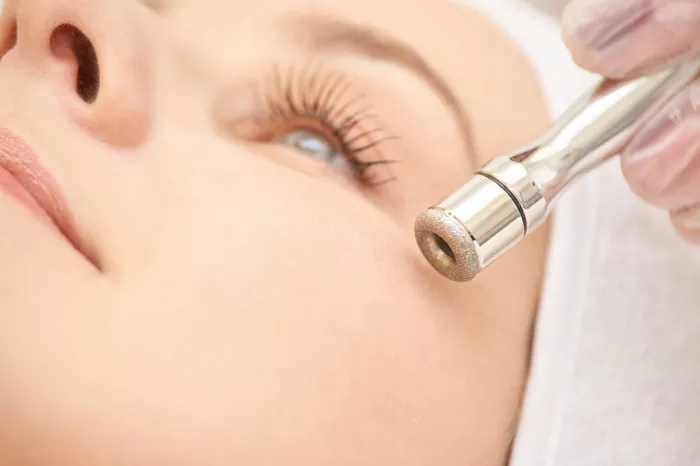Dermaplaning, a popular exfoliation technique, has gained prominence in the realm of skincare for its ability to deliver smooth and radiant skin. As individuals delve into the world of dermaplaning, questions about its impact on hair growth inevitably arise. In this comprehensive exploration, we will navigate through the intricacies of dermaplaning, its effects on hair, and the science behind the often-asked question: Does hair grow back after dermaplaning?
The Essence of Dermaplaning
Dermaplaning is a non-invasive cosmetic procedure designed to exfoliate the skin and remove fine vellus hair, commonly known as peach fuzz. The procedure involves the use of a sterile surgical scalpel, which is carefully maneuvered across the skin’s surface to slough off dead skin cells and the fine hairs that may be present. Dermaplaning is known for its ability to create a smooth and polished complexion, contributing to a refreshed and rejuvenated appearance.
While the primary goal of dermaplaning is exfoliation, its impact on hair has raised questions about the regrowth and texture of the removed hair.
The Mechanism of Dermaplaning on Hair
Dermaplaning effectively removes the fine vellus hair on the skin’s surface. Unlike other hair removal methods that target the hair follicle, such as laser hair removal or waxing, dermaplaning provides a temporary solution by addressing only the visible hair above the skin. The procedure does not impact the hair follicle’s structure or function, allowing the hair to grow back over time.
The fine vellus hairs targeted during dermaplaning are typically soft and light-colored, and their removal contributes to the immediate enhancement of the skin’s texture and appearance.
The Rate of Hair Regrowth
The rate at which hair grows back after dermaplaning can vary among individuals and is influenced by various factors. Understanding these factors provides insights into the dynamics of hair regrowth post-dermaplaning.
Individual Hair Growth Cycle: Each hair on the body goes through a growth cycle that includes an active growth phase (anagen), a transitional phase (catagen), and a resting phase (telogen). The rate at which hair grows back after dermaplaning is influenced by the individual’s hair growth cycle, with hairs in the anagen phase regrowing more quickly.
Genetics and Hormones: Genetic factors and hormonal fluctuations play a significant role in hair growth. Individuals with a genetic predisposition to faster hair growth may experience quicker regrowth after dermaplaning. Hormonal changes, such as those related to pregnancy or certain medical conditions, can also affect hair growth patterns.
Frequency of Dermaplaning Sessions: The frequency of dermaplaning sessions can impact the regrowth rate of hair. While dermaplaning provides immediate results, the fine vellus hairs will gradually regrow over time. The more frequent the dermaplaning sessions, the more consistent the maintenance of smooth skin.
Age and Metabolism: Age-related changes in metabolism can influence the rate of hair growth. Younger individuals with faster metabolism may experience quicker regrowth compared to those with slower metabolism, such as older individuals.
Addressing Common Misconceptions
One common misconception surrounding hair removal methods, including dermaplaning, is the belief that hair regrows thicker or darker after removal. However, the science behind hair growth dispels this myth.
Hair Structure Remains Unchanged: The structure of hair is determined by factors within the hair follicle, not by the removal method. Dermaplaning, which only addresses the visible hair on the skin’s surface, does not alter the structure or color of the hair that regrows.
Fine Vellus Hair vs. Terminal Hair: The fine vellus hairs targeted during dermaplaning are different from the coarser terminal hairs found on the scalp, underarms, or pubic area. Terminal hairs, when regrowing after removal, may appear blunt initially but will gradually taper to their natural point.
Perception of Thickness: The perception of increased thickness after hair removal is often due to the blunt edge of regrowing hairs. As the hairs naturally taper, they may appear finer and less noticeable.
Post-Dermaplaning Care
While dermaplaning is a safe and effective exfoliation method, proper post-care is essential to support the skin’s healing and the regrowth of fine vellus hairs. Consider the following steps for optimal post-dermaplaning care:
Gentle Cleansing: Use a mild, non-abrasive cleanser to cleanse the skin after dermaplaning. Avoid harsh exfoliants or products that may irritate the skin.
Hydration and Moisturization: Keep the skin well-hydrated by using a gentle, hydrating moisturizer. Hydration is crucial for supporting the skin’s healing process and maintaining its overall health.
Sun Protection: Sunscreen is a non-negotiable aspect of post-dermaplaning care. The newly revealed skin is more susceptible to sun damage, and protecting it with a broad-spectrum SPF is essential. Choose a sunscreen with an SPF of 30 or higher and apply it regularly, especially if exposed to sunlight.
Avoid Harsh Products: In the days following dermaplaning, avoid using harsh skincare products that may cause irritation. This includes products with strong acids, retinoids, or abrasive particles.
Regular Moisturization: Keeping the skin moisturized is key to maintaining its suppleness and promoting an optimal environment for hair regrowth. Consider incorporating a moisturizer with ingredients like hyaluronic acid or ceramides.
Dermaplaning
The decision to undergo dermaplaning is a personal choice that depends on individual skincare goals and preferences. As a cosmetic procedure, dermaplaning offers immediate benefits in terms of exfoliation and the removal of fine vellus hair. However, individuals should approach dermaplaning with realistic expectations regarding the temporary nature of hair removal and the need for maintenance sessions.
The aesthetic results of dermaplaning, including the smooth texture of the skin, are often a significant draw for those seeking a non-invasive exfoliation method. Understanding the science behind hair growth and dispelling common myths can contribute to informed decisions and a positive dermaplaning experience.
In conclusion, dermaplaning remains a popular choice for individuals desiring a radiant and refined complexion. The procedure’s impact on hair is temporary, and the regrowth process is influenced by individual factors. By embracing proper post-dermaplaning care and appreciating the personalized nature of skincare, individuals can navigate the world of dermaplaning with confidence and a clear understanding of its effects on hair growth.


